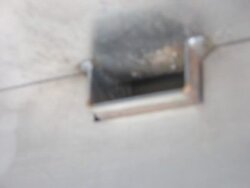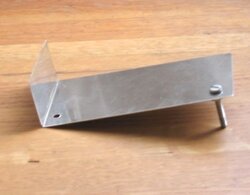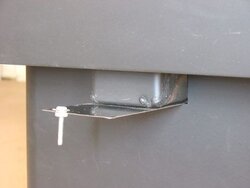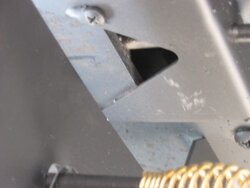One of the most frequent questions posted on this forum is "How can I get longer burn times from my stove?" I've shared my success in dealing with this in response to these posts, but apart from a few individuals who have "gotten it", it doesn't seem to sink in. All it requires is a small modification to your stove, a slight change in burn habits, and a little experimentation to "dial things in". So last night I decided to use my stove the "usual" way (i.e. unmodified) just to demonstrate again that my approach works. First, some basics.
When someone says they want longer burn times, that usually means they want enough red hot coals in the morning to do a "warm restart" without having to build a fire from scratch. Rake the coals forward, put in a fresh load of splits/rounds (maybe a couple sticks of kindling under them, maybe not), and in a few minutes, away it goes. Morning after morning, reliably. That is the goal.
The thesis is simple: The most effective way to get control of burn times is to get control of the air sources in your stove. Period.
The problem is, almost every modern stove has air sources that run wide open all the time, giving plenty of air to the coals to burn down overnight. More air = coals burn down more quickly. Less air = coals last longer. The solution is to examine each stove, identify where these "always open" air inlets are located, and come up with simple and effective ways of controlling them. This only needs to be done once for each stove. Findings can be posted in this thread. I'll show some ways I've done this to some of my stoves, as examples of where to look and how to make simple controls.
Back to the comparison. Last night there was a movie on later than I usually stay up, which gave me a good excuse to do this. My normal procedure is:
1. Start the last load of the evening so that the flames will die out right around bed time.
2. When the flames die, close down the secondary air.
3. Close down the primary air ALMOST all the way. Go to bed.
4. Wake up in the morning, open the air controls, and within minutes have plenty of live coals for an easy warm start.
My normal bed time is 10pm, so with the Quad 2100, I start my last load somewhere in the 7-8pm range, depending on how big a load it is. Normal wake up time is 5-6am. That's 10-11 hour burn times. Reliably.
Last night I used the stove like it would be used without the secondary air controls.
1. Load up the stove about 40 minutes before going to bed.
2. Adjust controls to get the burn established and then burning stable at a low burn rate. Go to bed.
3. Wake up in the morning to find not enough live coals for a warm restart.
Last night, the last load was at 10:30pm, I woke at 6am to find very few live coals in the firebox. That's less than 7.5 hours burn time.
This approach works. It can significantly extend the burn time for ANY EPA stove.
Later today I'll post some examples showing where to look for the air inlets and how to fashion simple shutoff controls.
When someone says they want longer burn times, that usually means they want enough red hot coals in the morning to do a "warm restart" without having to build a fire from scratch. Rake the coals forward, put in a fresh load of splits/rounds (maybe a couple sticks of kindling under them, maybe not), and in a few minutes, away it goes. Morning after morning, reliably. That is the goal.
The thesis is simple: The most effective way to get control of burn times is to get control of the air sources in your stove. Period.
The problem is, almost every modern stove has air sources that run wide open all the time, giving plenty of air to the coals to burn down overnight. More air = coals burn down more quickly. Less air = coals last longer. The solution is to examine each stove, identify where these "always open" air inlets are located, and come up with simple and effective ways of controlling them. This only needs to be done once for each stove. Findings can be posted in this thread. I'll show some ways I've done this to some of my stoves, as examples of where to look and how to make simple controls.
Back to the comparison. Last night there was a movie on later than I usually stay up, which gave me a good excuse to do this. My normal procedure is:
1. Start the last load of the evening so that the flames will die out right around bed time.
2. When the flames die, close down the secondary air.
3. Close down the primary air ALMOST all the way. Go to bed.
4. Wake up in the morning, open the air controls, and within minutes have plenty of live coals for an easy warm start.
My normal bed time is 10pm, so with the Quad 2100, I start my last load somewhere in the 7-8pm range, depending on how big a load it is. Normal wake up time is 5-6am. That's 10-11 hour burn times. Reliably.
Last night I used the stove like it would be used without the secondary air controls.
1. Load up the stove about 40 minutes before going to bed.
2. Adjust controls to get the burn established and then burning stable at a low burn rate. Go to bed.
3. Wake up in the morning to find not enough live coals for a warm restart.
Last night, the last load was at 10:30pm, I woke at 6am to find very few live coals in the firebox. That's less than 7.5 hours burn time.
This approach works. It can significantly extend the burn time for ANY EPA stove.
Later today I'll post some examples showing where to look for the air inlets and how to fashion simple shutoff controls.






